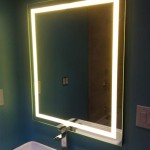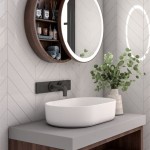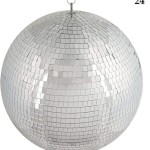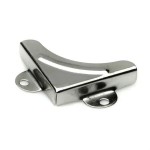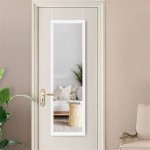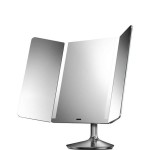Car Rear View Mirror: Convex or Concave?
The side and rearview mirrors in a vehicle are crucial for driver safety, providing a view of the surrounding traffic. Understanding the different types of mirrors used and their respective properties contributes significantly to safe driving practices. This article explores the concave and convex mirror properties and clarifies which type is used for a car's rearview mirror.
Convex Mirrors and Their Properties
A convex mirror is a curved mirror with a reflecting surface that bulges outwards. This curvature results in a wider field of view than a flat mirror of the same size. The image formed by a convex mirror is always virtual, upright, and smaller than the actual object. The "virtual" characteristic means the image appears to be behind the mirror and cannot be projected onto a screen. While the reduced image size might seem like a drawback, the expanded field of view is the primary benefit for its use in certain automotive applications.
Concave Mirrors and Their Properties
A concave mirror has a reflecting surface that curves inwards, like the inside of a bowl. These mirrors can produce both real and virtual images, depending on the object's distance from the mirror. A real image can be projected onto a screen, while a virtual image cannot. When an object is close to a concave mirror, the image formed is virtual, upright, and magnified. As the object moves further away, the image can become real, inverted, and even smaller than the object depending on the focal length of the mirror. This magnification property is utilized in applications like makeup mirrors, but it's not ideal for rearview mirrors in cars.
The Rearview Mirror Choice: Convex
Car rearview mirrors use convex mirrors. The primary reason is the wider field of view. While the image is smaller than the actual object, the increased visibility of the surrounding area outweighs this disadvantage. The convex mirror allows the driver to see a larger portion of the road behind them, including vehicles in adjacent lanes, that might otherwise be missed with a flat or concave mirror. The “objects in mirror are closer than they appear” warning printed on many rearview mirrors reminds drivers of the image size distortion and cautions them to judge distances carefully.
Side View Mirrors: Variations and Considerations
While not the primary focus, it's important to note side view mirrors can vary. Some vehicles employ flat or slightly convex mirrors for the driver-side mirror to provide a more accurate representation of distances. However, the passenger-side mirror is typically convex, often with a greater curvature than the rearview mirror, to further enhance the field of view and minimize blind spots. The increased distortion on the passenger side is less critical as it's not the driver's primary viewing mirror for lane changes or other maneuvers.
Safety Implications of Mirror Choice
The choice of mirror curvature directly impacts driver safety. A convex mirror's wider field of view helps reduce blind spots, enabling the driver to make more informed decisions when changing lanes, merging, or parking. While the image size distortion can be initially disconcerting, drivers quickly adapt to the difference. Understanding the properties of convex mirrors is crucial for correctly interpreting the information presented and making safe driving judgments.
Understanding Image Distortion in Convex Mirrors
The image distortion inherent in convex mirrors is an essential factor to understand. While the wider field of view is beneficial, the smaller image size can lead to misjudgments of distance and speed. This is why drivers need to rely on multiple visual cues, including direct observation and peripheral vision, and not solely depend on the rearview mirror for assessing the traffic situation behind them.
Proper Adjustment of Rearview and Side View Mirrors
Correctly adjusting the rearview and side view mirrors is paramount to maximizing their effectiveness. The rearview mirror should be positioned to provide a clear view of the entire rear window. Side view mirrors should be adjusted outwards just enough to minimize overlap with the rearview mirror's field of view. This arrangement maximizes the overall visible area and reduces blind spots, enhancing the driver's awareness of the surrounding traffic environment.

Convex And Concave Mirrors In Cars

Concave Vs Convex Mirrors In Cars
In Trucks Cars Buses Side View Mirrors Are Convex But Center Rear Mirror Is Or Plane Quora

Types Of Mirror For Vehicles Concave Vs Convex Sunway Autoparts

Types Of Mirror For Vehicles Concave Vs Convex Sunway Autoparts
Why Are Car Mirrors Marked Objects In Mirror Closer Than They Appear Can T Just Be The Actual Distance Instead Of Being Farther Or Quora
Why Don T Car Manufacturers Use Convex Mirrors As A Rear View Mirror This Could Enable You To See Cars On Each Side Of Quora

Black Heavy Duty Concave And Convex Scratch Resistant Car Side Mirror At Best In Udaipura Shri Krishna Decor

Convex Concave Mirror Car Motorcycle Rear View Glass China Silver Made In Com
What S Wrong With The Way I Look Rear And Front Mirror Of Car Makes Me Very Nice But Ones On Side Don T Going Quora

